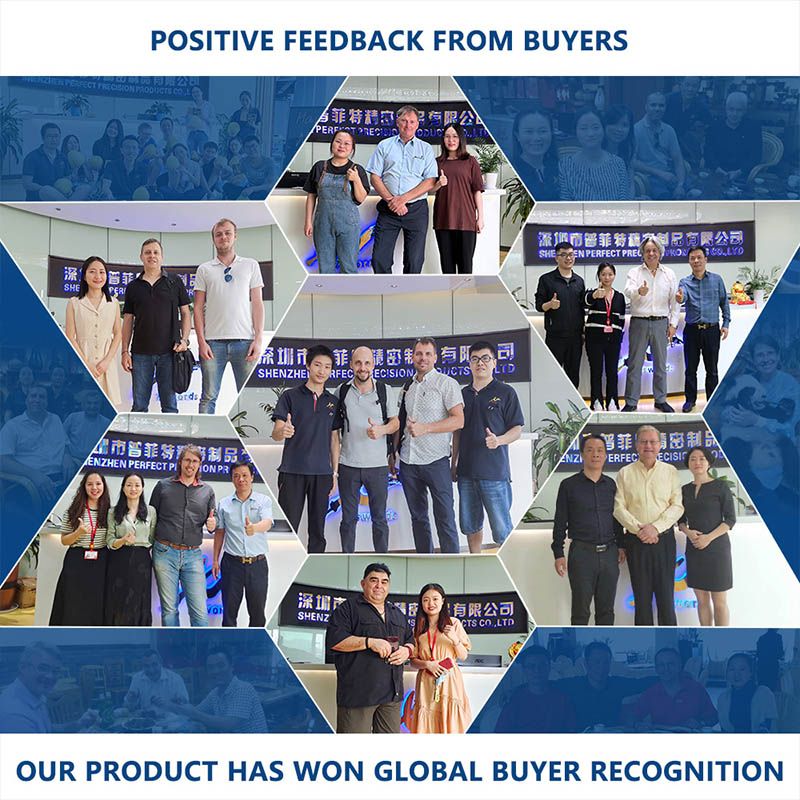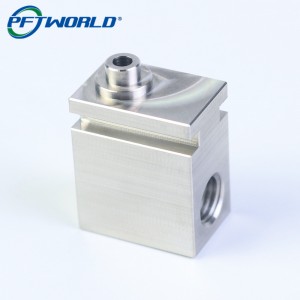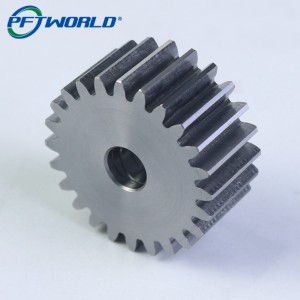Turning metal CNC
Turning metal CNC (Computer Numerical Control) machining is a high-precision and high-efficiency metal processing technology widely used in mechanical manufacturing, automotive, aerospace and other fields.
1、 Product Features
High precision machining
By adopting advanced numerical control systems, it is possible to accurately control the motion trajectory and cutting parameters of cutting tools, achieving high-precision turning machining. The machining accuracy can reach the micrometer level, ensuring the dimensional accuracy and surface quality of the parts.
Equipped with high-precision spindle and feed system to ensure the stability and accuracy of the machining process. High spindle speed and torque can meet the processing needs of different materials; The feed system has high precision and fast response, and can achieve precise feed control.

Efficient production
High degree of automation, capable of continuous processing and multi process composite processing. Through programming control, multiple processing steps can be completed at once, reducing the number of clamping times and processing time, and improving production efficiency.
Fast processing speed and high cutting efficiency of cutting tools. The CNC system can automatically adjust cutting parameters based on the characteristics of the machining material and tool, achieving the best machining effect. Meanwhile, high-speed cutting can also reduce tool wear and extend tool life.
Wide adaptability of processing materials
Suitable for turning various metal materials, including steel, iron, aluminum, copper, titanium, etc. Different materials can choose different cutting tools and cutting parameters to achieve the best machining effect.
For materials with high hardness, such as quenched steel, hard alloys, etc., effective processing can also be carried out. By selecting appropriate cutting tools and processing techniques, machining quality and efficiency can be ensured.
Complex shape processing capability
Capable of processing various complex shaped parts, such as cylinders, cones, threads, surfaces, etc. Through programming control, multi axis linkage machining of cutting tools can be achieved to meet the machining needs of complex parts.
For some special shaped parts, such as irregular shafts, gears, etc., machining can also be achieved by customizing specialized tools and fixtures.
2、 Processing technology
Programming and Design
According to the drawings and processing requirements of the parts, use professional CAD/CAM software for programming and design. Programmers can generate CNC programs based on machining processes and tool paths, and conduct simulation verification to ensure the correctness and feasibility of the programs.
In the design process, it is necessary to consider factors such as the structural characteristics of the parts, machining accuracy requirements, material properties, etc., and select appropriate machining processes and cutting tools. At the same time, it is necessary to consider the design and installation of fixtures to ensure the stability and accuracy of the parts during the machining process.
stores reserve
Select suitable metal materials according to the machining requirements of the parts, and perform pre-processing such as cutting, forging, and casting. The preprocessed material needs to be inspected and measured to ensure its dimensional accuracy and quality meet the requirements.
Before processing, it is necessary to perform surface treatment on the material, such as removing impurities such as oxide scale and oil stains, to ensure processing quality.
Processing operation
Install the preprocessed material on the lathe and fix it with fixtures. Then, according to the programmed CNC program, start the machine tool for processing. During the machining process, attention should be paid to the wear of the cutting tools and the adjustment of cutting parameters to ensure machining quality and efficiency.
For some complex shaped parts, multiple clamping and processing may be required. Before each clamping, precise measurement and adjustment are required to ensure the machining accuracy of the parts.
Quality inspection
After processing, quality inspection of the parts is required. The testing items include dimensional accuracy, shape accuracy, surface roughness, hardness, etc. Common testing tools and equipment include coordinate measuring instruments, roughness meters, hardness testers, etc.
If quality problems are found in the parts during inspection, it is necessary to analyze the reasons and take corresponding measures for improvement. For example, if the size exceeds the tolerance, it may be necessary to adjust the machining process and tool parameters and redo the machining.
3、 Application Fields
Mechanical manufacturing
Turning metal CNC machining has a wide range of applications in the field of mechanical manufacturing. It can process various mechanical parts such as shafts, gears, sleeves, flanges, etc. These parts typically require high precision, high surface quality, and complex shapes, which CNC machining can meet.
In mechanical manufacturing, CNC machining can also be combined with other machining processes, such as milling, drilling, tapping, etc., to achieve multi process composite machining, improve production efficiency and machining accuracy.
Automobile manufacturing
Automobile manufacturing is one of the important application areas of CNC machining for turning metal. Can process automotive engine parts, transmission parts, chassis parts, etc. These parts usually require high precision, high strength, and high reliability, and CNC machining can ensure the realization of these requirements.
In automobile manufacturing, CNC machining can also achieve automated production, improve production efficiency and quality stability. At the same time, customized processing can be carried out according to the needs of different car models to meet personalized market demands.
Aerospace
The aerospace industry has extremely high requirements for machining accuracy and quality of parts, and turning metal CNC machining also has important applications in this field. Can process aircraft engine parts, spacecraft parts, etc. These parts usually require the use of high-strength, high-temperature resistant, and corrosion-resistant materials, and CNC machining can ensure the machining quality and accuracy of these materials.
In the aerospace field, CNC machining can also achieve the processing of complex shaped parts, such as turbine blades, impellers, etc. These parts have complex shapes and are difficult to process. CNC machining can achieve high-precision machining through multi axis linkage machining.
Electronic communication
Some metal parts in electronic communication devices can also be machined using turning metal CNC machining. For example, phone cases, computer heat sinks, communication base station components, etc. These parts typically require high precision, high surface quality, and complex shapes, which CNC machining can meet.
In the field of electronic communication, CNC machining can also achieve small batch and multi variety production, meeting the rapidly changing market demand.
4、 Quality assurance and after-sales service
quality assurance
We strictly adhere to international quality management system standards, conducting rigorous quality control at every stage from raw material procurement to product delivery. We use high-quality metal materials and establish long-term partnerships with well-known suppliers to ensure stable and reliable quality of raw materials.
During the processing, we use advanced processing equipment and testing methods to comprehensively inspect and monitor each product. Our professional technicians have rich experience and professional knowledge, and are able to promptly identify and solve problems that arise during the production process, ensuring that product quality meets customer requirements.
after-sale service
We are committed to providing customers with high-quality after-sales service. If customers encounter any problems while using our product, we will respond promptly and provide technical support. We can provide product repair, maintenance, replacement and other services according to customer needs.
We will also regularly visit customers to understand their usage and feedback on our products, and continuously improve our products and services to meet their needs and expectations.
In short, turning metal CNC machining is a high-precision and high-efficiency metal processing technology with broad application prospects. We will continue to adhere to the principle of quality first and customer first, providing customers with high-quality products and services.


1、 Product Features and Technology
Q1: What is metal turning CNC?
A: Turning metal CNC is a method of cutting metal using computer digital control technology. By precisely controlling the cutting motion of the tool on a rotating workpiece, high-precision and complex shaped metal parts can be manufactured.
Q2: What are the advantages of CNC machining for turning metal?
A:
High precision: capable of achieving very precise size control, with machining accuracy reaching the micrometer level.
High efficiency: With a high degree of automation, continuous processing is possible, greatly improving production efficiency.
Complex shape processing capability: capable of processing various complex rotating body shapes, such as cylinders, cones, threads, etc.
Good consistency: Ensure that mass-produced parts have a high degree of consistency.
Q3: Which metal materials are suitable for processing?
A: Widely applicable to various metal materials, including but not limited to steel, iron, aluminum, copper, titanium alloys, etc. Different materials can choose different cutting tools and processing parameters to achieve the best processing effect.
2、 Processing and Quality Control
Q4: What is the processing procedure like?
A: Firstly, program and design based on the part drawings or samples provided by the customer. Then, install the raw materials on the lathe, start the CNC system, and the cutting tools perform cutting according to the preset program. During the processing, real-time monitoring and adjustment will be carried out to ensure the quality of the machining. After processing, conduct quality inspection.
Q5: How to ensure processing quality?
A: We use advanced processing equipment and high-precision cutting tools to strictly control processing parameters. At the same time, multiple quality inspections are conducted during the processing, including size measurement, surface roughness testing, etc. If quality issues are found, timely adjustments and improvements should be made.
Q6: How much machining accuracy can be achieved?
A: Generally speaking, the machining accuracy can reach ± 0.01mm or even higher, depending on factors such as the complexity of the parts, materials, and machining requirements.
3、 Order and Delivery
Q7: How to place an order?
A: You can contact us by phone, email, or online platform to provide part drawings or samples as well as processing requirements. Our technicians will evaluate and provide you with a detailed quotation and delivery time.
Q8: What is the delivery time?
A: The delivery time depends on factors such as the complexity, quantity, and processing difficulty of the parts. Generally speaking, simple parts can be delivered within a few days, while complex parts may take several weeks or even longer. We will provide you with an accurate delivery time when accepting the order.
Q9: Can I expedite the order?
A: Orders can be expedited under certain conditions. However, expedited processing may incur additional costs, and the specific situation needs to be evaluated based on the specific circumstances of the order.
4、 Price and Cost
Q10: How is the price determined?
A: The price mainly depends on factors such as the material, size, complexity, processing accuracy requirements, and quantity of the parts. We will evaluate based on your specific requirements and provide you with a reasonable quotation.
Q11: Are there any discounts for mass production?
A: For bulk production orders, we will offer certain price discounts. The specific discount amount depends on factors such as the number of orders and processing difficulty.
5、 After sales service
Q12: What should I do if I am not satisfied with the processed parts?
A: If you are not satisfied with the processed parts, please contact us promptly. We will evaluate the issue and take corresponding measures to improve or reprocess it to ensure your satisfaction.
Q13: Is there after-sales service available?
A: We provide comprehensive after-sales service, including quality assurance, technical support, and repair services. If there are any problems during use, we will promptly solve them for you.
I hope the above FAQ can help you better understand CNC products for turning metal. If you have any other questions, please feel free to contact us at any time.












